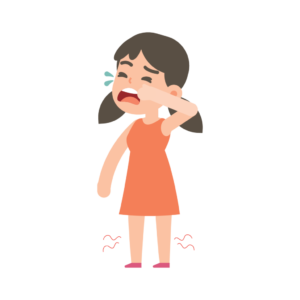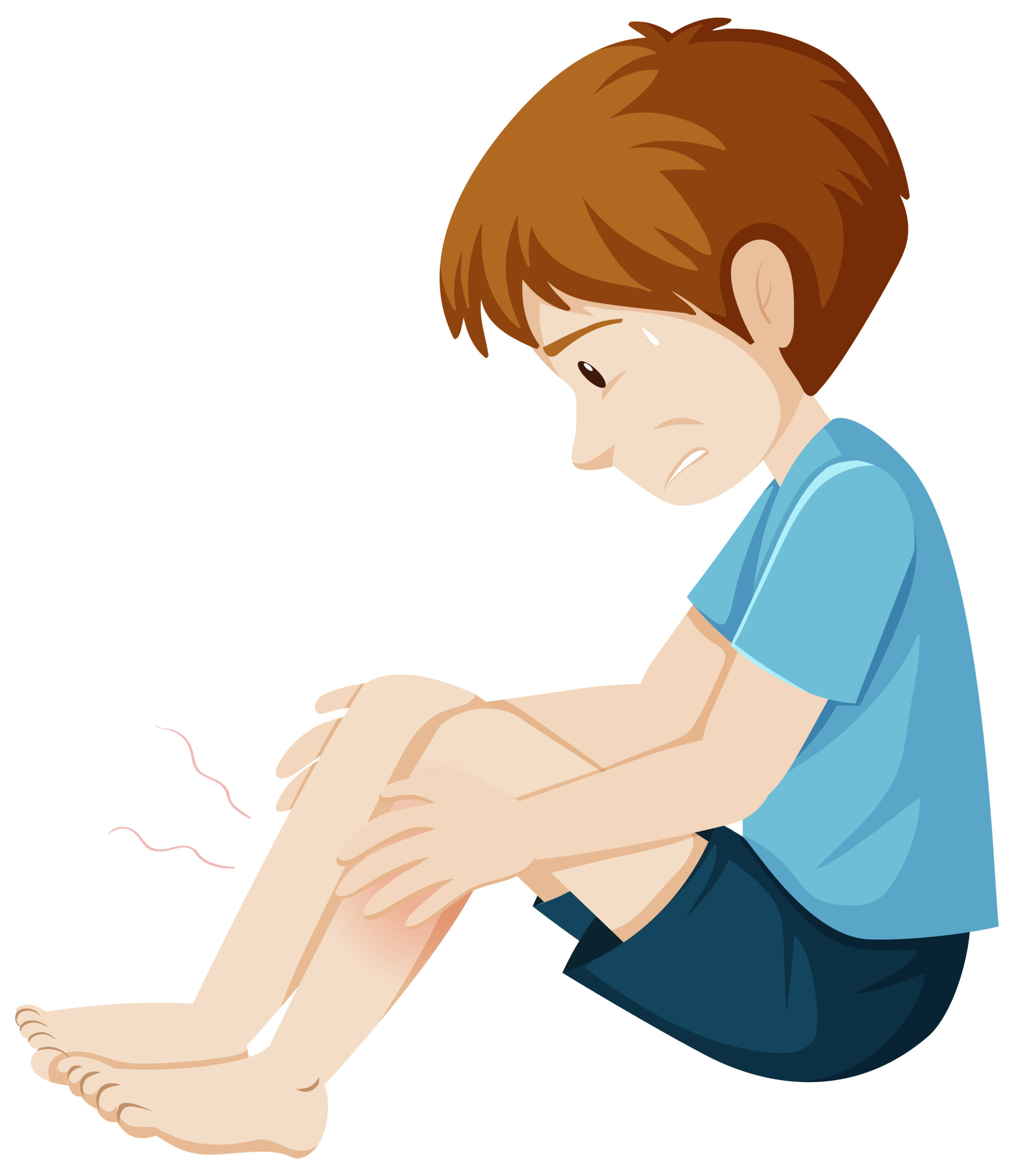
Leg Pain In Children
nathaniclinic1
October 2, 2023

My daughter is 2 months short of 6 years.. she too complains of leg pain in the night quite frequently.. many times, she is unable to sleep because of the pain. Even I wanted to know if it was normal or not.
A distraught mother posted this question on our WhatsApp group.
Leg pain in children is a common concern for parents and caregivers. The causes of the leg pain range from benign to serious conditions requiring
prompt attention. A quick visit to your pediatrician, an expert history, and an examination will quickly rule out the more sinister causes of leg pain, like infections, arthritic pain, malignancies, etc.
Nature of leg pain in growing pains
Once we establish the diagnosis of growing pains, it is important to understand that the pains are benign, recurrent, self-limiting episodes that occur in preschool and school children. These usually occur late in the day and may wake the child and the family at night after the child sleeps.
The pains usually occur once a week but, in severe cases, may occur daily. There is evidence of clustering (the child may have pain for many days at a stretch, then suddenly becomes well for a prolonged time, and then the pains relapse).
The pain is usually in the shin or calf, the lower thighs, and around the knee, but not in the joints. The child typically describes them as throbbing or aching discomfort. It is severe and gradually reduces in severity over the next hour. The child usually feels better after massaging the affected area.
Growing Pains is a misnomer!
While all children grow, They typically have growth spurts between 3 and 5 years of age and 9 to 12 years of age. However, the so-called growing pains occur in children from three to 12 years of age. Ideally, the phenomenon should be called Idiopathic/Benign nocturnal pains of childhood.
Why do growing pains occur?
As of now, we don’t really know. While the growing part of the name came from the supposition that rapid longitudinal growth of the bones caused stress on the muscles and ligaments, which then caused pain, we know that there is no significant increase in the length of the bones either before the pain started or the period after the pains have subsided. Many hypotheses, like local overuse associated with poor bone strength, hypermobility of the joints, less vitamin D, etc. Many of the parents of sufferers suffered from leg pain themselves when they were children.
Some evidence suggests that these children cannot bear pain very well and may amplify their perceived pain. But this is still a theory and cannot explain all the cases.
Is it necessary to visit our pediatrician?
Yes, indeed! Your doctor will take a quick history and a thorough examination. She will, in all probability, advise basic blood tests. Growing pains are a diagnosis of exclusion (this means that one has ruled out more sinister causes of the pain – those who must be diagnosed and treated in time).
What can I do to relieve my child’s leg pain?
- Realize that growing pains are benign and self-limiting: This is crucial. Otherwise, there is a lot of anxiety, hardship, and expenses during unnecessary workup.
- Acknowledge the severity of pain and do not restrict the child’s activity. Restricting the child’s activity to prevent overuse is not helpful as the pains will continue and affect the child psychologically.
- Take care of yourself, too. Once the pain is relieved, the child quickly goes back to sleep and may not even remember the episode of pain the next day. However, the parents’ sleep is disturbed, which may impact their day-to-day activities.
- Nonmedicinal management: Local massage and local warm fomentations help in the majority of children.
- Painkillers: Paracetamol or Ibuprofen in the appropriate dose may help. Usually, the pain gets better before the body has time to absorb the drug in meaningful amounts.
Doctor, I can predict when my child will have leg pain most of the time. Can we prevent it?
Surely, we can give a painkiller just before the child sleeps. But you must remember that all medications can potentially cause side effects. You need to be quite sure about your intuition. You can’t take the risk of side effects based on trying to prevent a potentially unpleasant and painful event.
Your pediatrician may prescribe preventive painkillers if:
- You’re fairly sure your child will get pain, especially after a long, hard day at work or play or if the child has been unusually fussy or irritable throughout the day.
- If you know that your child’s leg pain episodes occur in clusters with long periods of normalcy in between. Your pediatrician can start him on painkillers to prevent the pain at night.
Alternative Therapies
- Vitamin D Supplementation has been proven helpful, especially if the blood vitamin D levels are lower.
- Physical therapy. Muscle stretching exercises of the affected muscles have helped children with recalcitrant leg pain.
- Use of devices (Orthotics): Children with hyperextensibility of joints may benefit from using appliances that correct the abnormality.
This post has been written by Drs. Rajesh Nathani and Ankita Bhandari.
Our Consulting Specialities
Recent Posts


Subscribe Our Newsletter
The premier children’s clinic and general vaccination center in Chembur, Mumbai
Make an Appointment
- 8 AM - 8 PM , Monday - Saturday
Call Us Today
9987084813
Online Doctor Consultation Nathani Clinic
Copyright © 2024. All rights reserved.


